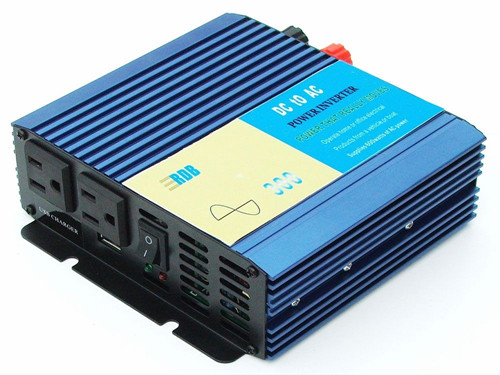Inverters, also known as converters and inverters, are devices that convert DC power into AC power. They are composed of inverter bridges, logic controls, and filter circuits. They can be divided into half-bridge inverters and full-bridge inverters. Translator and so on. It has been widely used in air conditioners, home theaters, computers, televisions, range hoods, fans, lighting, video recorders and other devices. Next Xiaobian introduced inverter circuit principles and inverter classification for everyone.

Inverter circuit principle
First, the main circuit
The entire process of input from AC grid and DC output includes:
1. Input filter: Its function is to filter the clutter that exists in the power grid, and at the same time hinder the clutter generated by the machine from feeding back to the public power grid.
2. Rectification and filtering: The AC power supply of the power grid is directly rectified into a smoother DC power for the next level of conversion.
3. Inverter: Transform the rectified DC power into high-frequency AC power, which is the core part of high-frequency switching power supply. The higher the frequency, the smaller the ratio of volume, weight and output power.
4, the output rectification and filtering: According to the load needs, provide a stable and reliable DC power supply.
Second, the control circuit
On the one hand sampling from the output, after comparing with the set criteria, and then to control the inverter, change its frequency or pulse width, to achieve stable output, on the other hand, according to the test circuit provided information, identified by the protection circuit, provide The control circuit carries out various protection measures for the complete machine.
Third, the detection circuit
In addition to providing various parameters during operation in the protection circuit, various display instrument data are also provided.
Fourth, auxiliary power
Provides different power requirements for all single circuits.
Inverter classification
1. Centralized inverters: The main features are high stand-alone power, low MPPT, and low cost per watt.
2. String inverters: The stand-alone power is between 3-60 kW. The mainstream models have a stand-alone power of 30-40 kW, single or multiple MPPT, generally 6-15 kW MPPT. This kind of inverter has a higher cost per watt and is mainly applied to small and medium-sized power stations. The utilization rate of power plants with a capacity of 1MW or less in the world exceeds 50%.
3, micro-inverter: single machine power below 1kW, single MPPT, applications are mostly 0.25-1kW all the way MPPT, its advantage is that each block or several panels can be independent MPPT control, but this type of inverter The cost per watt is very high. Currently there are many applications in home photovoltaic power stations below 10kW in North America.

PV inverter features
1, requires a higher efficiency
Due to the current high price of solar cells, in order to maximize the use of solar cells and improve system efficiency, we must try to improve the efficiency of the inverter.
2, requires a high degree of reliability
At present, the photovoltaic power station system is mainly used in remote areas, and many power stations are unattended and maintained. This requires a reasonable circuit structure of the inverter, strict component screening, and requires the inverter to have various protection functions, such as: input DC polarity reverse protection, AC output short circuit protection, overheating, overload protection, etc.
3, require a wide range of input voltage input
Because the terminal voltage of the solar battery changes with the change of the load and the sunshine intensity. Especially when the battery ages, its terminal voltage has a wide range of variation, such as a 12V battery. The terminal voltage may vary from 10V to 16V, which requires the inverter to work normally within a large DC input voltage range. .
Editor's summary: The principle of the inverter circuit and the classification of the inverter are introduced here, and we hope to help everyone. If you want to know more related information, you can pay attention to this website information.
Siphon Principle Refrigeration Principle Inverter Circuit
Titanium Bars,Titanium Rod,Pure Titanium Bar,Rectangular Titanium Bars
Baoji Yongshengtai Titanium Industry Co., Ltd. , https://www.bjystititanium.com